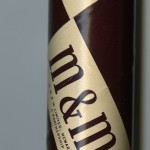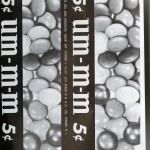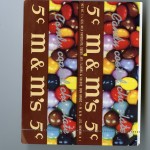SciTech Tuesday: WWII and the Invention of M&Ms.
On March 3, 1941, Forrest Mars received a patent for the most popular and long-lasting WWII invention: sugar coating milk chocolate to make a candy. He got the idea from a confection named ‘Smarties,’ which Forrest saw soldiers in England eating. The hard exterior kept the chocolate from melting and making a mess when it warmed in a pocket or hand. Do not mistake British ‘Smarties’ with American ‘Smarties’—they are completely differently delicious.
Forrest Mars was the son of Frank C Mars, the founder of Mars Company. Forrest and his business partner Bruce Murrie (who was the son of the president of Hershey Chocolate) began production of the candies at a factory in Newark, New Jersey in 1941, naming their company M&M (using their last initials). Chocolate was rationed at the time, and the partnership allowed the fledgling company to use Hershey’s monopolized chocolate. In later years as Forrest Mars took the helm of his father’s company (and eventually became Forrest Mars Sr), he bought the Murrie share of the company and folded it into Mars.
The candies, which came in a cylindrical tube, became a staple of rations for soldiers, and the company moved production to a bigger factory in Hackettstown. Although the candies were made in great volume, they were only available as part of military rations until throughout the war. The iconic ‘M’ printed on each candy didn’t come until 1950, and at first was printed in black.
The first M&Ms came in 5 colors—brown, yellow, green, red and violet. Forrest Mars also invented the Mars bar (1932) based on the Milky Way (1923) introduced by his father. It’s a sweet story.
All images from the collection of the National WWII Museum
- Violet was an original M & Ms color
Posted by Rob Wallace, STEM Education Coordinator at The National WWII Museum.
Are you, or do you know, a science teacher of students in 5th-8th grades? We are looking for members for the 2016 Real World Science Cohort. Spend a week at our museum, learning all about how to teach hands-on science with connections to history and literacy. Apply now–applications accepted until March 4, 2016.







Leave a Reply